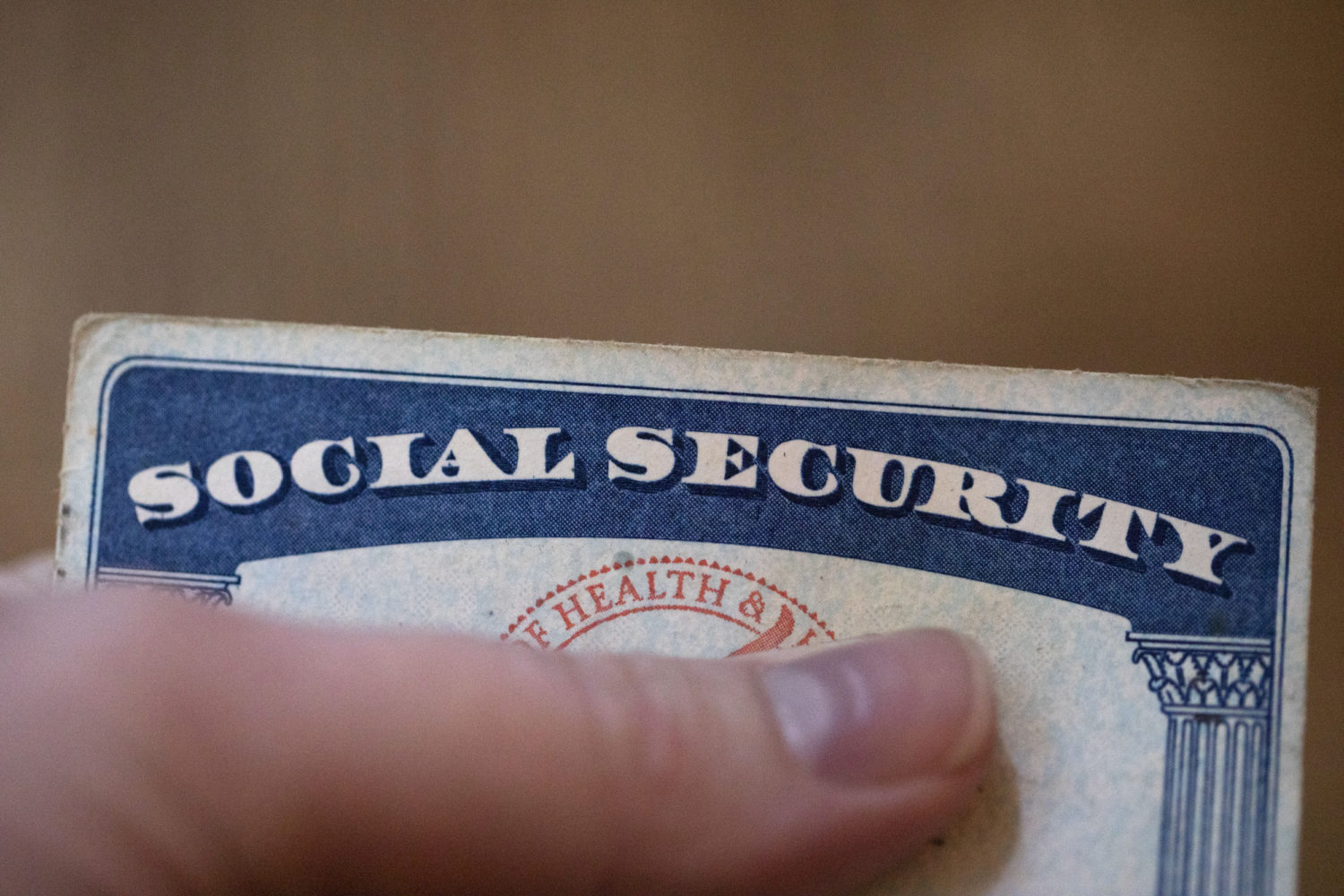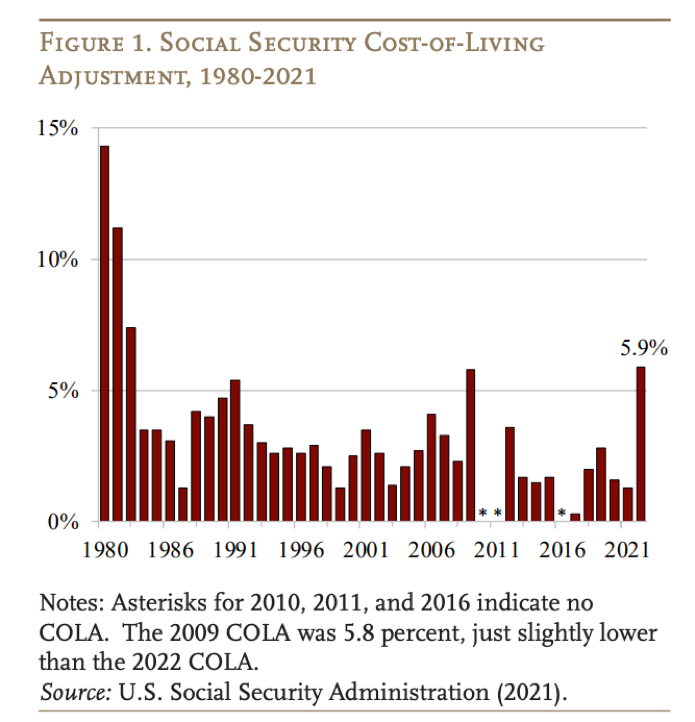 Covering COVID-19 is a daily Poynter briefing of story ideas about the coronavirus and other timely topics for journalists, written by senior faculty Al Tompkins. Sign up here to have it delivered to your inbox every weekday morning.
Covering COVID-19 is a daily Poynter briefing of story ideas about the coronavirus and other timely topics for journalists, written by senior faculty Al Tompkins. Sign up here to have it delivered to your inbox every weekday morning.
Social Security benefits are going up in 2023. On Thursday, 70 million Americans — including seniors, people with disabilities and survivors of benefit-eligible adults — will find out how much of a cost-of-living (or COLA) raise they will get in January.
It will be a big one by historical standards.
Social Security raises are tied to the Consumer Price Index (which comes out Thursday), which measures the rate of inflation at the consumer level. That means the COLA increase will probably be in the area of 8.7%. Compare that to previous years.
The Motley Fool investment website says:
The average benefit paid to retired workers would rise by about $150 per month, and that extra cash would help repair the damage done by inflation this year, especially if inflation continues to cool as it has in the last two months.
It is possible that some retirees will see their income taxes rise if the COLA increase pushes them over income thresholds. It would be interesting to ask people running for midterm elections if they think Social Security benefits should be taxed.
The winter forecast: mild start, rough February 2023
I have to be straightforward here, I do not have a ton of faith in these extreme long-range forecasts. But AccuWeather meteorologists said this winter “will shape up much differently than last winter in part due to a volcano that erupted on the other side of the globe.” OK, they have my attention.
AccuWeather senior meteorologist Paul Pastelok says his team is predicting a “triple dip La Niña,” as it is the third winter in a row that La Niña will shape the weather patterns across the U.S. The team is watching for a February polar vortex that would bring extreme cold as far as Texas. But the team expects 2022 to end with a mild start to winter. The prediction is that the interior part of the country will see a couple of big snow events after the new year compared to the last four winters.
The regular climate phenomenon occurs when the water near the equator in the eastern Pacific Ocean is cooler than average, which in turn influences the jet stream and the overall weather patterns in North America. Despite what will be the third La Niña winter in a row, this winter will not necessarily be a carbon copy of the past two.
“These third-year La Niñas are very tricky,” Pastelok said, with no two La Niña winters being exactly the same. The weather setup will be one of the most complicated and dynamic in recent memory due to all of the weather factors in play over the upcoming months, Pastelok said.
One of the more unusual factors that could influence the overall weather patterns this winter can be traced back to a cataclysmic volcano eruption that took place in the early weeks of 2022. The volcano spewed an unprecedented amount of debris high into Earth’s atmosphere which, as Pastelok will explain, could still be having an effect on the weather on a global scale.
When you look at the city-specific estimates, they are not that far out from normal, and in some cases could fall fairly far below normal.
As you no doubt heard during the coverage of Hurricane Ian, the Gulf of Mexico is really warm. AccuWeather experts say that will cause some frequent heavy rain and storms across the Gulf coast and into the Tennessee valley into the winter. That happened last December when tornadoes killed 80 people in Kentucky.
I would be interested to know if cities and states pay attention to these kinds of forecasts when they buy and store road salt and other seasonal supplies.
By the way, New York City schools recently announced that there will be “no snow days” this school year because the system learned to use virtual teaching during the pandemic. NBC News called it “a disturbing new trend.”
The lingering western drought
Nearly three-quarters of the western part of the country is still in a drought and close to a fifth of western states are in an extreme drought right now.
The AccuWeather long-term forecast does not predict any relief.
“Drought conditions could become worse in some regions of the West with the winter forecast to begin on a dry note,” AccuWeather said.
The unsupported threat of drugs in your kid’s Halloween candy

A boy gets candy via a plastic pipe to help prevent the spread of the coronavirus as he trick-or-treats for Halloween Saturday, Oct. 31, 2020, in downtown Overland Park, Kan. (AP Photo/Charlie Riedel)
‘Tis the season to scare people about the threat of drug dealers and sex addicts coming after their kids during trick-or-treat outings. The latest “threat” is rainbow-colored fentanyl that the U.S. Drug Enforcement Agency warned was drug cartels’ attempt to lure children into a life of drug use.
Republicans jumped on the warning as evidence that the Biden administration is soft on crime and border enforcement. Democrats responded by proposing more than $250 million in new funding to fight rainbow fentanyl with Senate Majority Leader Chuck Schumer saying, “Halloween is coming up … this is very worrisome and really dangerous.”
The DEA has not made the connection between fentanyl and Halloween candy. And, make no mistake, the DEA says it captured thousands of the colored pills in New York City recently. The DEA says, “Fentanyl is involved in more than 80% of overdose deaths in the city.”
Rolling Stone talked with Mariah Francis, a resource associate with the National Harm Reduction Coalition, who said that just because the pills are brightly colored does not mean they are targeted at children. Other illicit drugs have been packed in bright colors to make them appear less harmful.
“We saw it with MDMA, we see it in club drugs,” Francis told Rolling Stone. “And it’s actually kind of embarrassing because the DEA is really just late, late to the party.”
Francis further stated to Rolling Stone that the motive for selling drugs is profit, and that because children don’t typically have incomes, the idea of sneaking any drug into Halloween candy is “utterly divorced from reality.”
Halloween is a common target for scary stories about how evil people will sneak marijuana-laced candy into Halloween bags. That was a widespread story while states were passing marijuana decriminalization laws.
Professor Joel Best is probably the best-known researcher of stories about “Halloween sadism,” including claims of needles and razor blades and drugs that somebody allegedly put in candy. Best has been looking at the data and at individual cases for decades and concluded there are very few such reports. Even those that get reported and investigated tend to turn out to be hoaxes or involve adults close to the children such as parents.
Other researchers have come to similar conclusions about the threat of sex offenders posing a larger threat around Halloween. The data does not support such fears.
Here’s the point: Fentanyl is deadly and a growing threat. It is not likely to wind up in a Halloween bag, but look everything over and toss anything that does not come in a reliable package. That’s the same advice that has made sense for decades.
Seriously? Sleep-tourism?
CNN Travel reported this week that there is a growing industry called “sleep tourism” which is somehow linked to the pandemic. CNN says:
Over the past 12 months, Park Hyatt New York has opened the Bryte Restorative Sleep Suite, a 900-square-foot suite filled with sleep-enhancing amenities, while Rosewood Hotels & Resorts recently launched a collection of retreats called the Alchemy of Sleep, which are designed to “promote rest.”
Zedwell, London’s first sleep-centric hotel, which features rooms equipped with innovative soundproofing, opened in early 2020, and Swedish bed manufacturer Hastens established the world’s first Hästens Sleep Spa Hotel, a 15-room boutique hotel, in the Portuguese city of Coimbra a year later.
The global pandemic appears to have played a huge part in this. A study published in the Journal of Clinical Sleep Medicine found that 40% of the over 2,500 adults who took part reported a reduction in their sleep quality since the start of the pandemic.
The CNN story links to one hotel in London that has a “sleep concierge,” which explains the service this way:
The Sleep Concierge is a brand-new service exclusive to guests at The Cadogan, who will be delighted to find a sleep-inducing meditation recording available in their rooms via the hotel app, recorded by Malminder. The Sleep Concierge also includes a pillow menu with a choice of luxurious pillows to suit guests who might prefer to sleep on their back or side, the option of a weighted blanket, a bedtime tea developed by The Cadogan specifically for the Sleep Concierge, and a scented pillow mist to support the best possible night’s sleep.
I checked for you in case you want to book a stay this weekend. The room costs between $1,131-$3,000 per night. I could not tell if it comes with a free make-your-own waffle breakfast. Knowing I could get a free breakfast would make me sleep better than fancy scented pillows.
Good journalists doing good things
Continued to be very proud of the team here @ABC7SWFL & @NBC2 https://t.co/yPUdilxvcw
— Tim Klutsarits (@TimKlutsarits) October 9, 2022
We’ll be back tomorrow with a new edition of Covering COVID-19. Are you subscribed? Sign up here to get it delivered right to your inbox.












